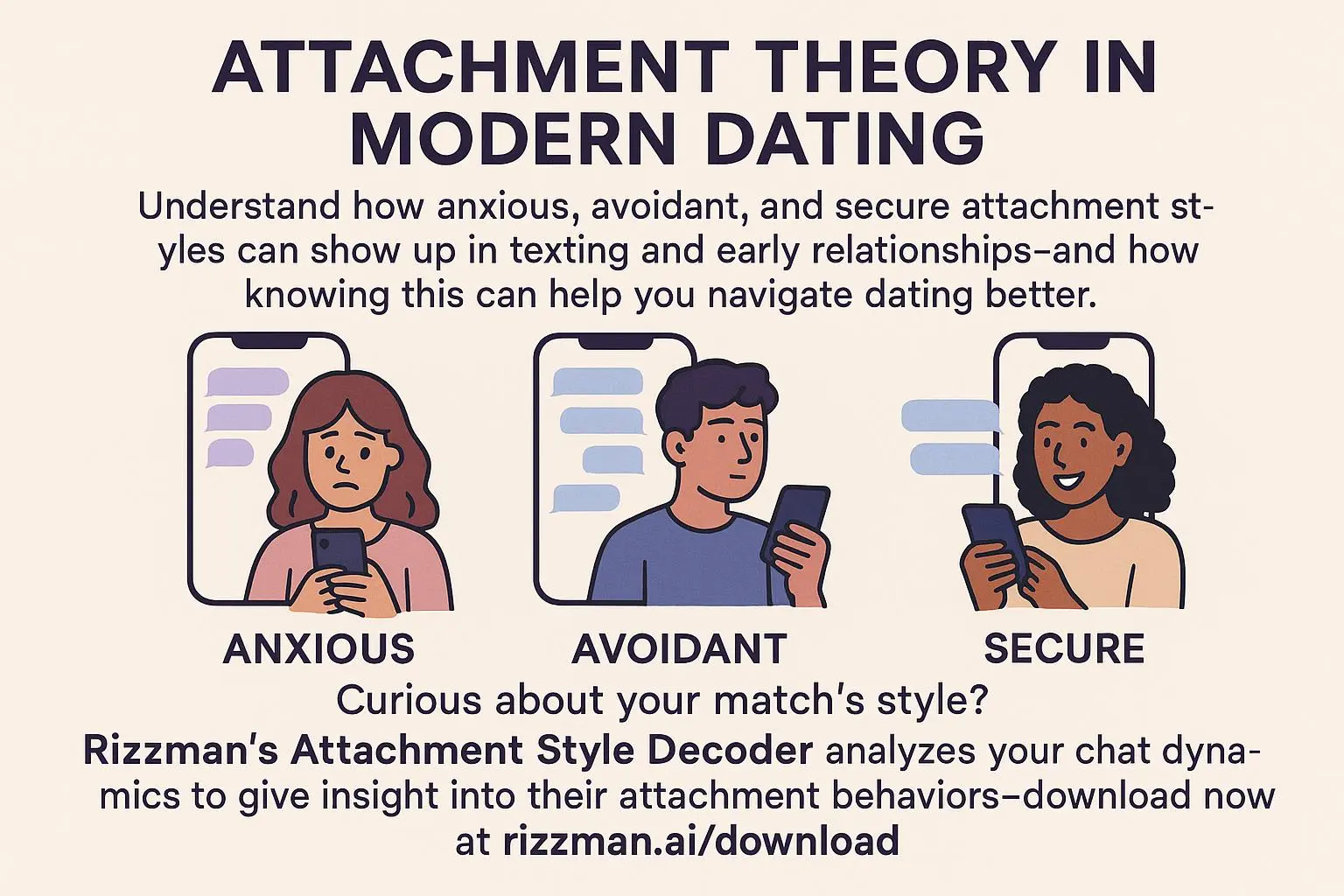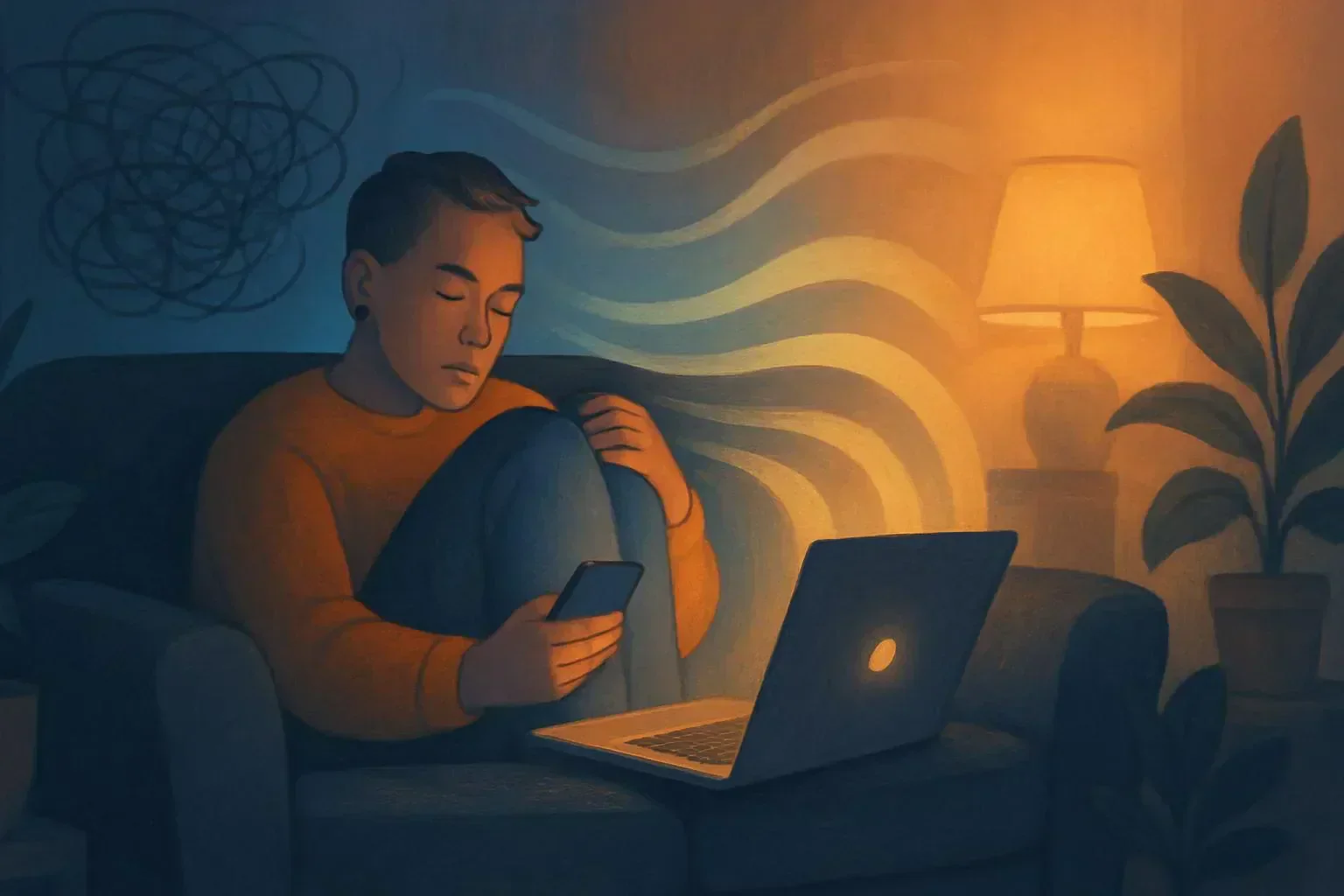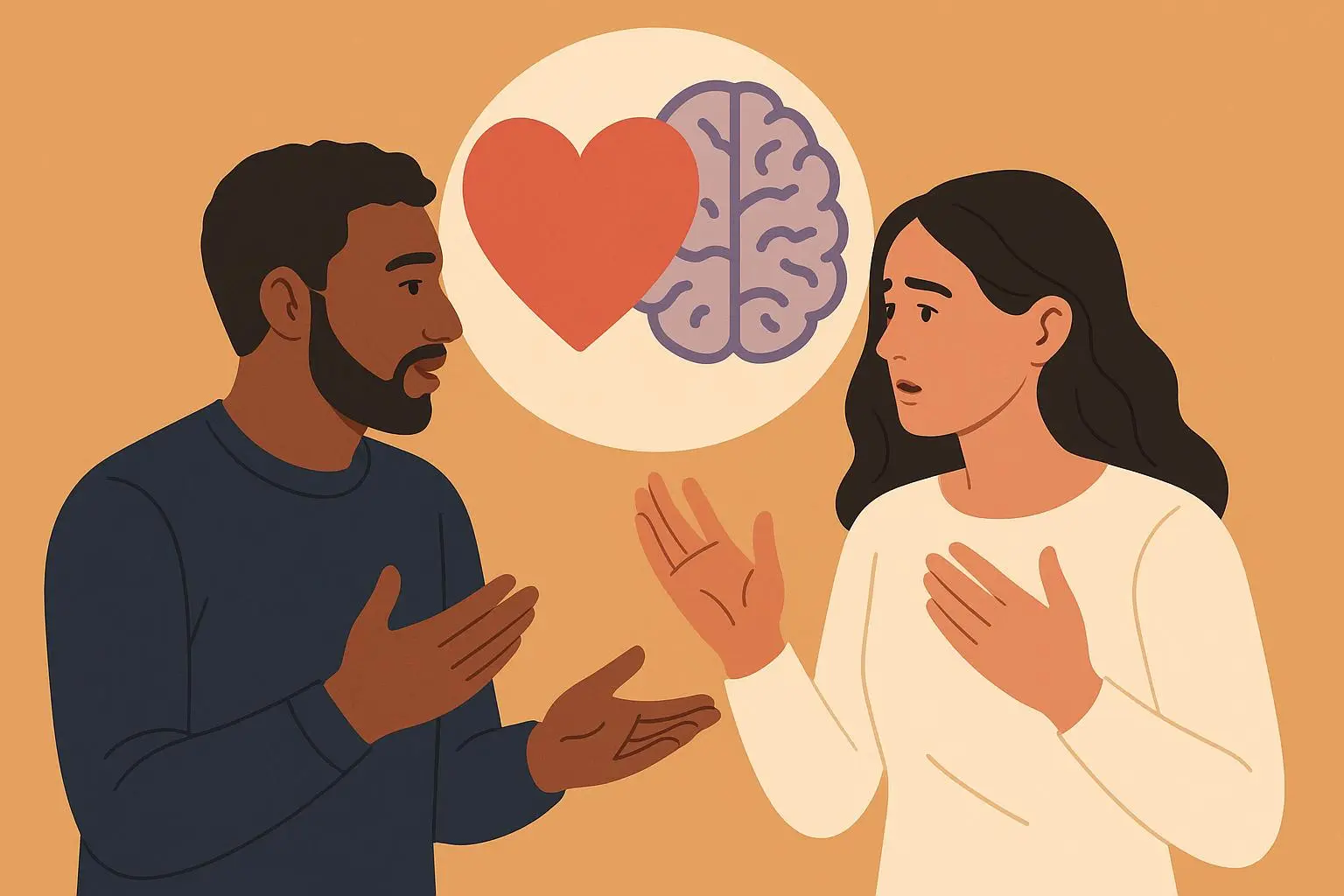
Avoidant Attachment: How to Stop Withdrawing in Love
Published on 4/18/2025 • 6 min read
Understanding why you pull back can feel like opening a window you’ve shut for years. I’ve been there: the moment a conversation shifts to feelings, I notice my shoulders hunch, my mind starts listing reasons to retreat, and suddenly I’m offline. Naming that pattern is powerful. It gives you a clear target and a plan for change.
Attachment theory helps explain why some of us lean toward autonomy in love. It’s not a flaw; it’s a set of strategies formed early on to protect ourselves from hurt. When you’re avoidant, the instinct is to preserve space and control. The risk is that healthy closeness can start to feel threatening, and distance becomes the default response. If you’re wondering whether you’re the one who clings or the one who withdraws, this piece is for you. I’ll outline what avoidant attachment looks like, why it develops, how it plays with an anxious partner, and practical, lived steps you can try.
Brief personal example (what changed for me)
In my mid-30s I noticed fights happening about once a week, usually after I withdrew during emotional conversations. After committing to eight weeks of individual therapy focused on attachment and practicing small communication rituals (a 60-second feelings check and a nightly 30-second reconnection text), we reduced intense arguments from roughly four per month to one every six weeks. That measurable shift — less reactivity, clearer timelines, more predictable follow-ups — convinced me the work was worth it.
- Micro-moment: I paused during a tense exchange, named my sensation aloud—“I feel crowded, but I want to stay in the conversation”—and my partner softened, taking the edge off the moment without a fight.
What Avoidant Attachment Really Means
Avoidant attachment, sometimes called dismissive-avoidant, isn’t a character flaw. It’s a set of survival strategies learned early on. If caregivers were emotionally distant or inconsistently available, you may have learned that depending on others hurts more than it helps. So you adapted.
At its core, avoidant attachment centers on autonomy and self-sufficiency. Where an anxious person fears abandonment, an avoidant person fears engulfment. You may prize independence and feel uncomfortable when someone leans on you emotionally. This isn’t coldness so much as protection: keeping emotional distance reduces the risk of being hurt.
Signs of avoidant tendencies include:
- valuing control and predictability; emotional intensity feels chaotic
- prioritizing work, hobbies, or solitude when things get too close
- downplaying your needs or convincing yourself they aren’t important
- in conflicts, withdrawing: change the subject, go quiet, or leave the room
- rationalizing why closeness is unnecessary, framing it as strength
Inside, it often feels like numbness more than strength: a muted emotional palette, occasional guilt for not showing more, and relief when distance restores safety.
How the Anxious-Avoidant Dance Starts
Dating an anxious partner can feel flattering at first. Their intensity can seem like you’re needed and wanted. For a while, that feels good.
But when a partner asks for more connection—more time, more reassurance, more emotional availability—your internal alarm can go off. The urge to pull back isn’t malicious; it’s a learned reaction aimed at preserving balance.
The cycle is deceptively simple:
- The avoidant partner senses a threat to independence and withdraws.
- The anxious partner, sensing distance, escalates pursuit and demands reassurance.
- The avoidant feels more pressured and withdraws further.
- The anxious person feels confirmed in their fear and escalates again.
This loop repeats until both partners are exhausted. Researchers have documented these patterns: deactivating strategies used by avoidant individuals reduce expressed need but can increase long-term relationship strain. [1]
Pulling away rarely creates the calm you expect. It creates confusion, amplifies your partner’s fear, and eventually confirms the very story you were trying to avoid.
The Inner Life of an Avoidant Partner
To change the dance, look honestly at what’s happening inside you.
Many avoidant people hold quiet beliefs: I must rely on myself; dependence is weakness; feelings are messy and unreliable. These beliefs were protective, but in adult relationships they often hinder intimacy.
Emotionally, avoidance shows as:
- numbness or detachment from feelings
- a strong positive self-image with a less positive view of others
- frustration with partners who “demand” too much
Behaviorally, avoidant people use deactivating strategies: minimizing needs, focusing on flaws, using humor or intellect as shields. Rather than say, “I’m overwhelmed,” it’s easier to change the topic or schedule more work.
Clinical research supports these dynamics: avoidant strategies reduce immediate distress but predict poorer relationship outcomes over time. [2]
Small Steps That Lead to Big Change
Change doesn’t mean dismantling your identity overnight. Growth is incremental. Below are practical steps, each its own small experiment. Try one at a time.
Learn to Name Your Feelings
This sounds basic but it’s foundational. When you feel the urge to retreat, pause and name the sensation: overwhelmed, boxed in, irritated, anxious.
Practice: carry a feelings list on your phone. When your gut tells you to step back, spend 60 seconds identifying the feeling. Naming reduces reactivity and invites curiosity instead of automatic withdrawal.
Practice Leaning Into Discomfort
Tolerating discomfort is practice. When your partner asks for more, try staying present for just a few extra minutes instead of shutting down.
Script: “I’m feeling crowded right now, but I want to be here. Can we talk about this in 20 minutes?”
That sentence acknowledges a boundary, communicates care, and gives your partner information — small steps that build trust.
Provide Proactive Reassurance
Short, proactive gestures rewire dynamics over time.
Examples: a text that says, “Thinking of you; I’ll call after this meeting,” or a quick check-in when plans shift.
Small signals show presence without demanding heavy emotional labor.
Notice and Interrupt Deactivating Strategies
Name the strategy aloud: “I notice I’m analyzing instead of feeling. I don’t want to shut down.” Calling it out breaks the automaticity and invites your partner back into the loop.
Build an Identity Outside the Relationship
Invest in hobbies, friendships, and goals that feed you. When your self-worth isn’t entirely tied to your partner’s attention, you’ll be less likely to flee.
This isn’t retreating; it’s building a fuller life that supports secure relating.
Communicating in Ways That Actually Work
Talking about attachment can feel clinical. The practical goal is simple: replace reactive silence with intentional communication.
- Use “I” statements describing feelings, not accusations. E.g., “I felt overwhelmed when plans changed.”
- Offer timelines when pulling back: “I need an hour to clear my head; after that, I’ll be ready to talk.”
- Ask for grace when you slip up: “I’m sorry I went quiet; I needed time and wish I’d told you sooner.”
These moves reduce the mystique of your silence and invite your partner into a cooperative process.
When You’re Paired with an Anxious Partner
Being with someone anxious can feel like walking a tightrope. You may see pursuit as clinginess; they may read your distance as rejection. Reframe both behaviors as expressions of unmet needs.
Ask: What need is my partner trying to meet? Often it’s reassurance, clarity, or safety. Treat pursuit as a request, not an attack.
Helpful practices:
- Brief check-ins during busy periods
- Rituals that provide predictability (a daily goodnight text)
- Clear boundaries paired with advance notice, not abrupt disappearances
These habits don’t erase differences but create predictable patterns that reduce alarm on both sides.
When to Seek Professional Help
Some patterns run deep and resist self-help. Couples therapy — ideally with a therapist who understands attachment theory — can accelerate change. Therapy provides a neutral space where patterns can be witnessed, named, and experimented with.
Consider seeking a therapist if avoidance leads to repeated breakups, persistent loneliness, or emotional numbness affecting daily functioning. Therapy isn’t failure; it’s an investment.
Realistic Expectations and the Path Forward
Change is gradual. If you’ve been avoiding for years, don’t expect transformation after a single conversation. Expect small wins: a tolerated conversation you would have once fled, a text to reassure instead of radio silence, a moment you stayed when you would have left.
Be patient. Avoidance developed as a coping mechanism. Replacing it requires new habits, repeated practice, and often vulnerability — which feels risky.
Celebrate progress. Small, consistent shifts add up. Over time they can transform your default script from protection-at-all-costs to a balance of autonomy and connection.
A Final Thought
Your impulse to protect yourself is not something to eradicate — it’s part of your story. Expand your toolbox so protection doesn’t have to mean distance. Learn to signal, to name, and to show up in small ways that don’t feel like surrender. In my life, scheduled check-ins, a sentence of honesty, and promises kept became the scaffolding for relationships that felt both freeing and safe.
Your attachment style explains the patterns you repeat, but it doesn't lock you into them. With curiosity, practice, and sometimes help, you can rewrite the dance and create partnerships where both closeness and independence are honored.
References
- Levine, A., & Heller, R. S. F. Attached: The New Science of Adult Attachment and How It Can Help You Find—and Keep—Love.
- Tatkin, S. Wired for Love: How Understanding Your Partner's Brain and Attachment Style Can Help You Defuse Conflict and Build a Secure Relationship.
- Johnson, S. Hold Me Tight: Seven Conversations for a Lifetime of Love.
Footnotes
-
Fraley, R. C., & Shaver, P. R. (1998). Adult attachment and its relation to close relationships. In J. A. Simpson & W. S. Rholes (Eds.), Attachment Theory and Close Relationships. Guilford Press. ↩
-
Mikulincer, M., & Shaver, P. R. (2007). Attachment in adulthood: Structure, dynamics, and change. Guilford Press. ↩
Ready to Optimize Your Dating Profile?
Get the complete step-by-step guide with proven strategies, photo selection tips, and real examples that work.


